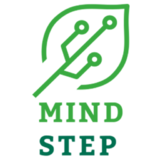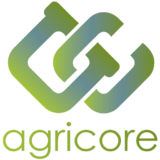Behavioural, Ecological and Socio-economic
Tools for Modelling Agricultural Policy
Collaborations
MIND STEP is a European research project aiming to improve exploitation of available agricultural and biophysical data and will include the individual decision making (IDM) unit in policy models.
WHY MIND STEP?
MIND STEP addresses the Work Programme Topic RUR-04-2018-2019, contributing to Rural Renaissance by further developing analytical tools and models to support policies related to agriculture and food. A. [2018] Developing new models supporting policies related to agriculture.
Agricultural policies like the EU CAP are widening the scope to contribute to the Paris climate agreement and the Sustainability Development Goals. From the Commission's legislative proposals (June 2018) it is expected that the European Union (EU) Common Agricultural Policy (CAP) will be redesigned in line with this. Consequences are among others a move of the CAP to farm specific measures and an improved link to environment, climate change and ecosystem services. It is proposed that Member States and regions develop their own CAP strategic plan with more attention to the regional implementation of the CAP. This wider scope and measures with a focus on individual farmers ask for a new generation of impact assessment tools. Current state-of-the-art agricultural models are not able to deliver individual farm and local effects as they are specified at higher levels of aggregation.
PROJECT OBJECTIVES
The overall ambition of MIND STEP is to support public decision making in agricultural, rural, environmental and climate policies, taking into account the behaviour of individual decision-making units in agriculture and the rural society.
The MIND STEP specific objectives are
- to develop a highly modular and customisable suite of Individual Decision Making (IDM) models focussing on behaviour of individual agents in the agricultural sector to better analyse impacts of policies,
- to develop linkages between the new IDM models and current models used at the European Commission to improve the consistency and to broaden the scope of the analysis of policies,
- to develop an integrated data framework to support analysis and monitoring of policies related to agriculture,
- to apply the MIND STEP model toolbox to analyse regional and national policies and selected EU CAP reform options and global events affecting the IDM farming unit, working together with policymakers, farmers and other stakeholders,
- to safeguard the governance and future exploitation of the MIND STEP model toolbox.
From the origins of the European Economic Community (EEC), during the 1950s of last century, the Primary Sector began to be regulated through the use of the Common Agricultural Policies (CAP) trying to reconvert both spaces and agricultural production for the common progress of states members.
However, the realities and needs of the sector have been necessary for the CAP to adapt to the new circumstances in which it is appearing over the decades; and, for this reason, the European Union (EU) has focused its efforts towards improving the Primary Sector, such as the orientation of production and crops, to take care of the level of life of its members, so with the implementation of environmental measures.
From these efforts comes the CONSOLE project, focuses on promoting the delivery of Agri-Environmental Climate Public Goods (AECPGs) by agriculture and forestry through the development of improving contractual solutions (that is, the relationships between the public administration (at different scales) and the farmers).
SUPREMA: Support for Policy Relevant Modelling of Agriculture
Impact assessments in areas of agriculture are often based on projections delivered by models. Policies affecting agriculture are becoming more and more interrelated. So the need arises to improve the capacity of current models, connect or redesign them to deliver empirical evidence on increasing varieties of policy objectives, and also to explore future directions for agricultural modelling.
SUPREMA comes to address this challenge by bringing models closely together that are already linked through various platforms and networks. In this regard, SUPREMA helps to close the gaps between expectations of policy makers and the actual capacity of models to deliver relevant policy analysis.
The SUPREMA model family includes ‘core models’ already used in support of key European impact assessments in agriculture, trade, climate and bioenergy policies. The SUPREMA meta-platform of the core models, the enhanced linking and some key applications melt down in a Roadmap for future directions for agricultural modelling in Europe.
The project has four coherent objectives:
- A SUPREMA roadmap of future directions for modelling
- An enhanced and strengthened SUPREMA model family
- Exploring and testing Future directions of modelling in agriculture will be explored and tested.
- A SUPREMA meta-platform will be established, to share and discuss the findings of the work with existing model platforms, research communities, and policy makers.
SIPATH - Operationalizing Sustainable Agricultural Intensification Pathways in Europe
SIPATH is an interdisciplinary project, bringing together researchers from WSL, Agroscope and VU Amsterdam, that aims to address these challenges. In particular, three main questions are investigated:
Sustainable Intensification of agriculture (SI) is advocated by both, scientists and policy makers, as a solution for the dilemma between the need to increase agricultural production and the need to reduce the environmental burden which intensification historically entailed. Yet it is largely unclear, if and how this potential win-win situation can be realized. SIPATH is an interdisciplinary project, bringing together researchers from WSL, Agroscope and VU Amsterdam, that aims to address how to operationalize the somewhat fuzzy concept of SI. The project will establish a strong conceptual framework on agricultural intensification. In particular, three main questions are investigated:
- What have been the main trajectories of agricultural intensification in Europe and what were the driving factors?
- What mega-trends will be decisive for the future of agriculture in Europe?
- What are potential alternative development pathways of agricultural intensification, and what are the triggers and incentives required to reduce trade-offs and increase their degree of sustainability?




